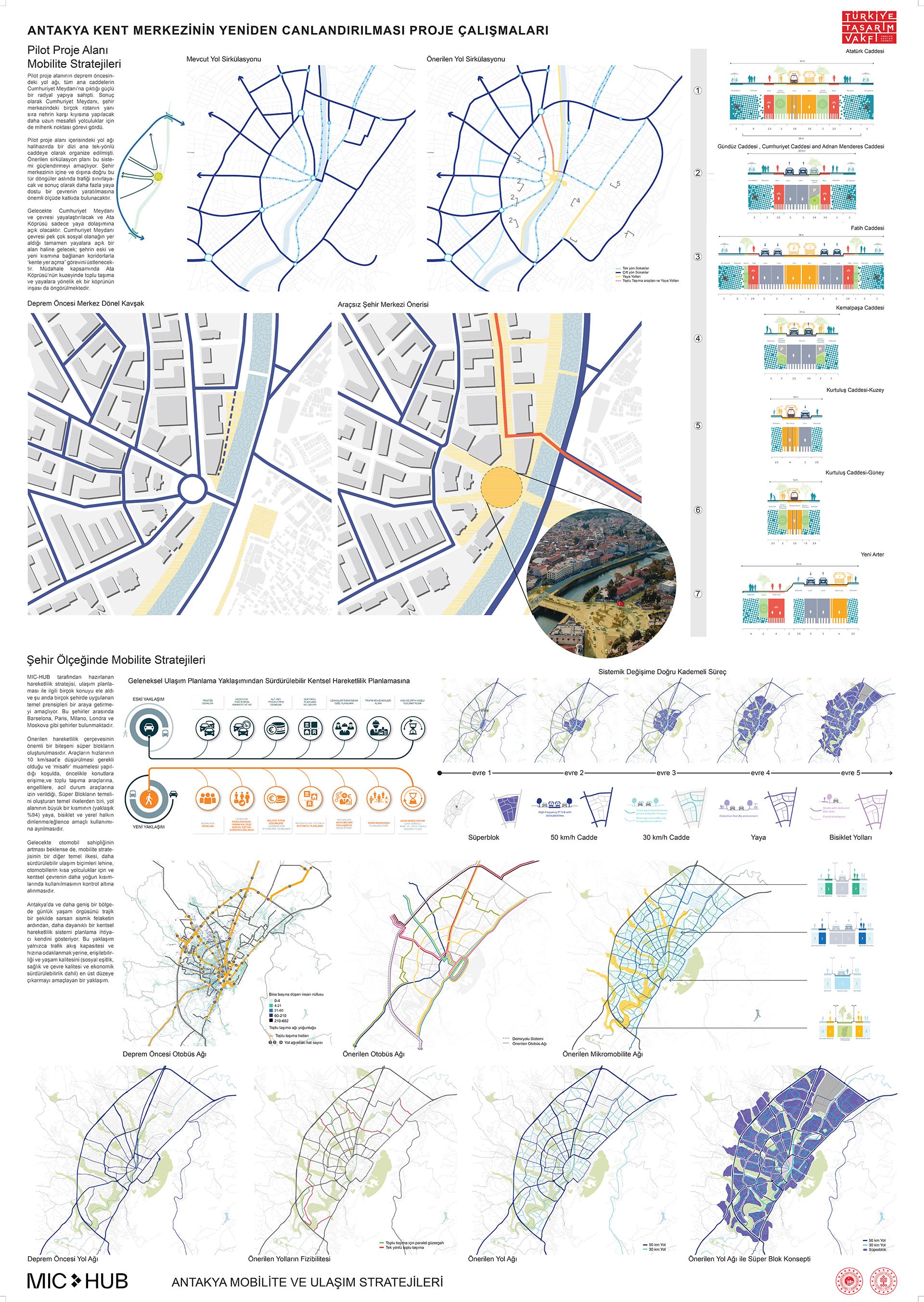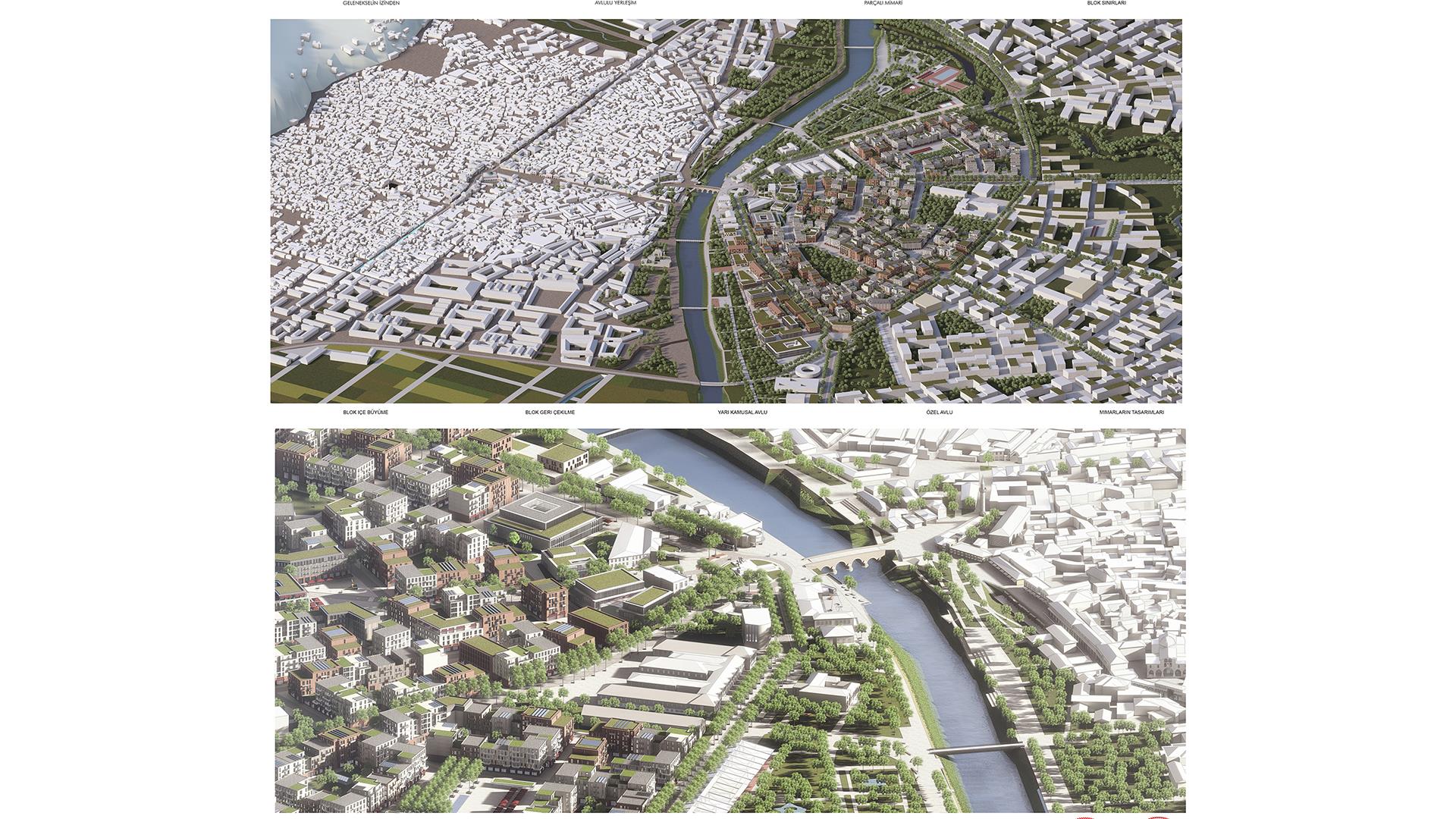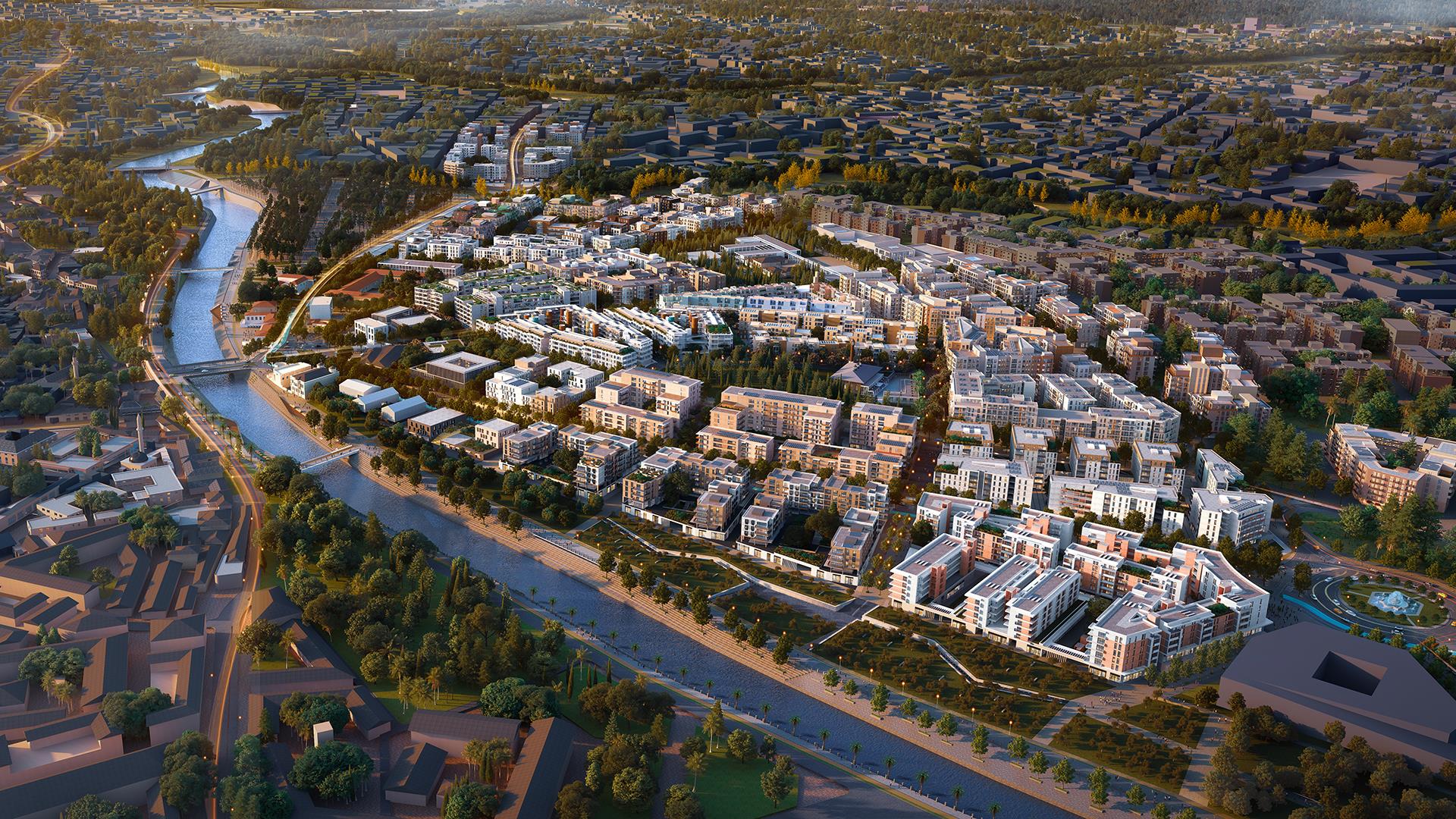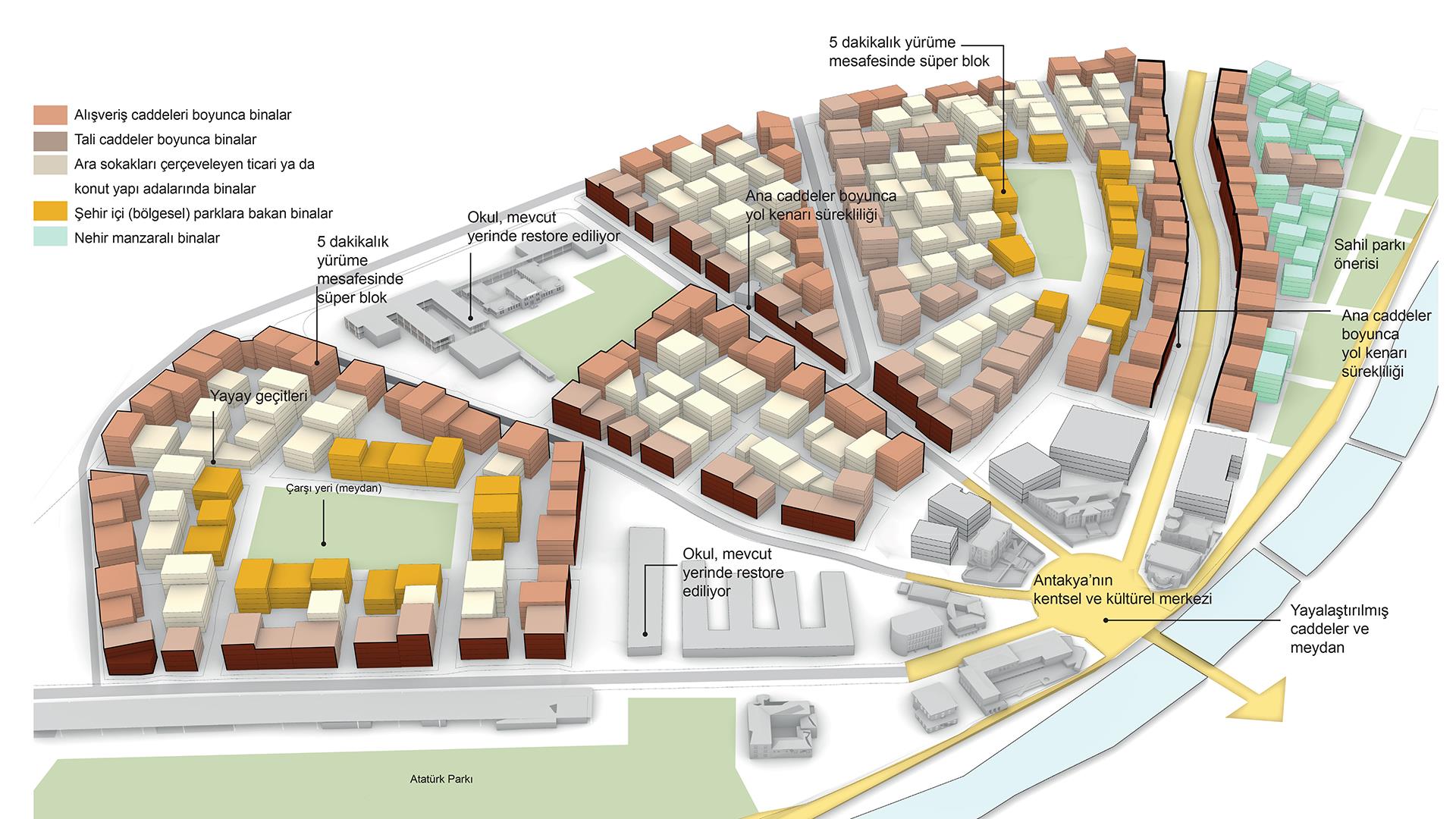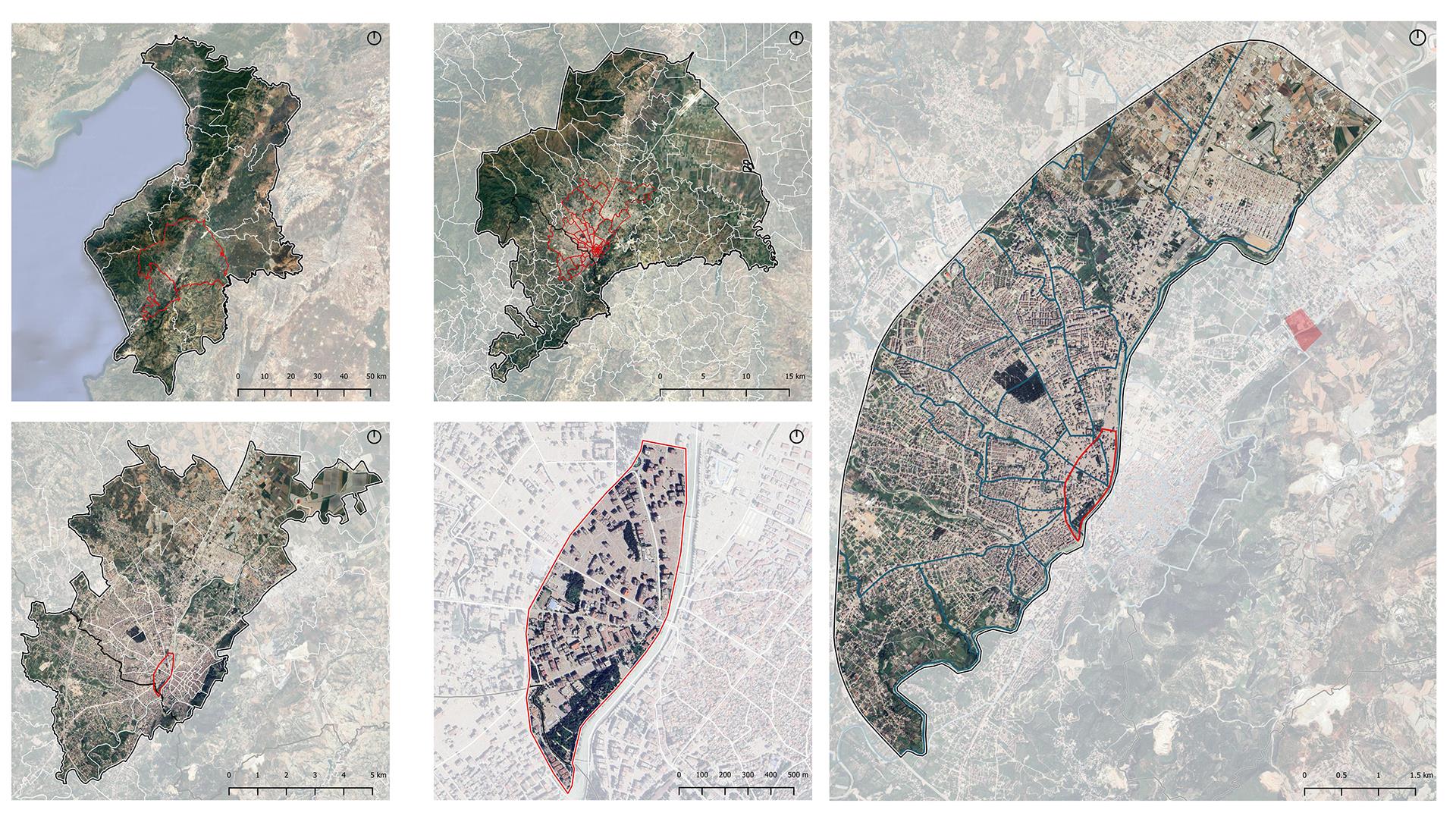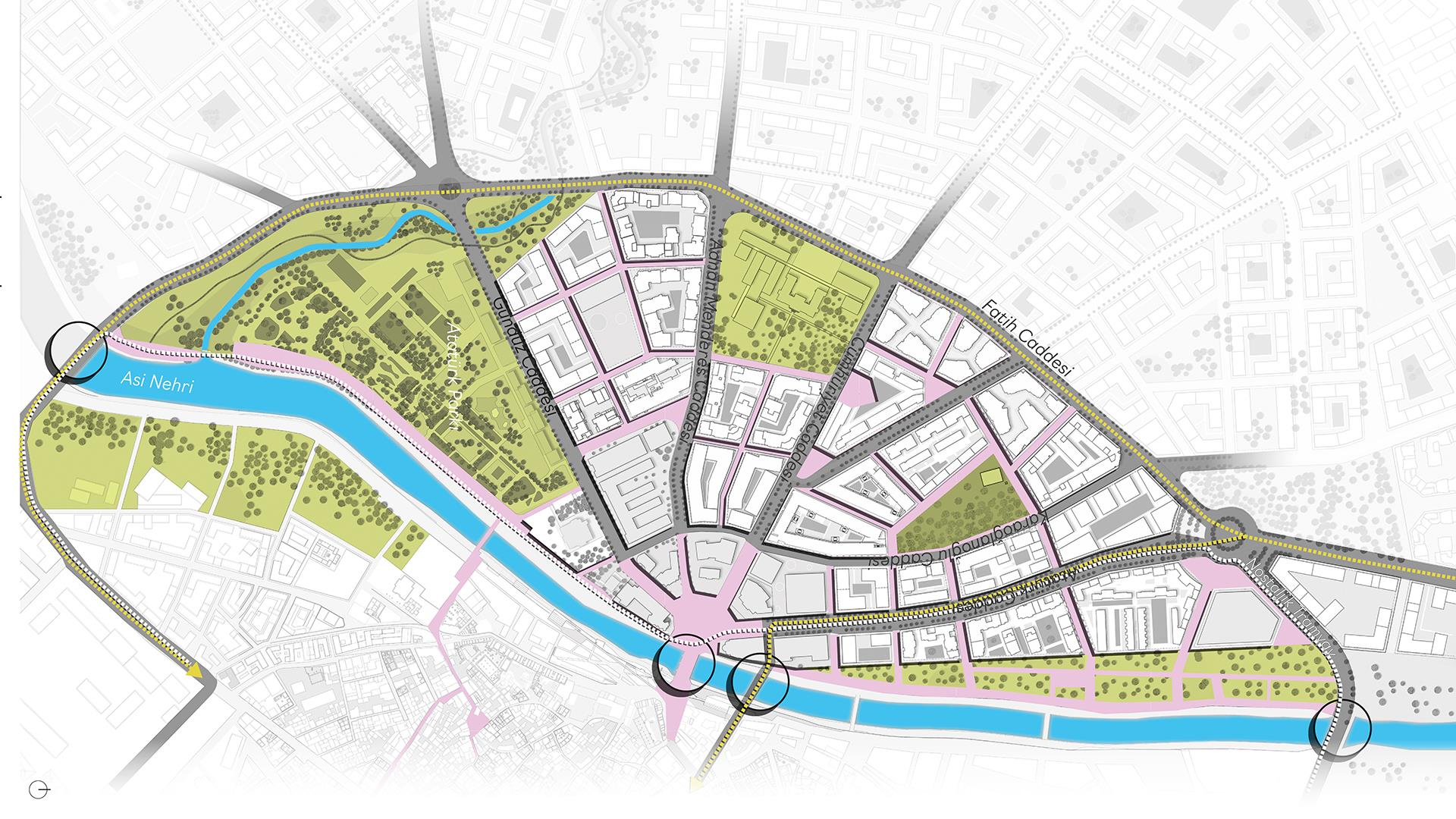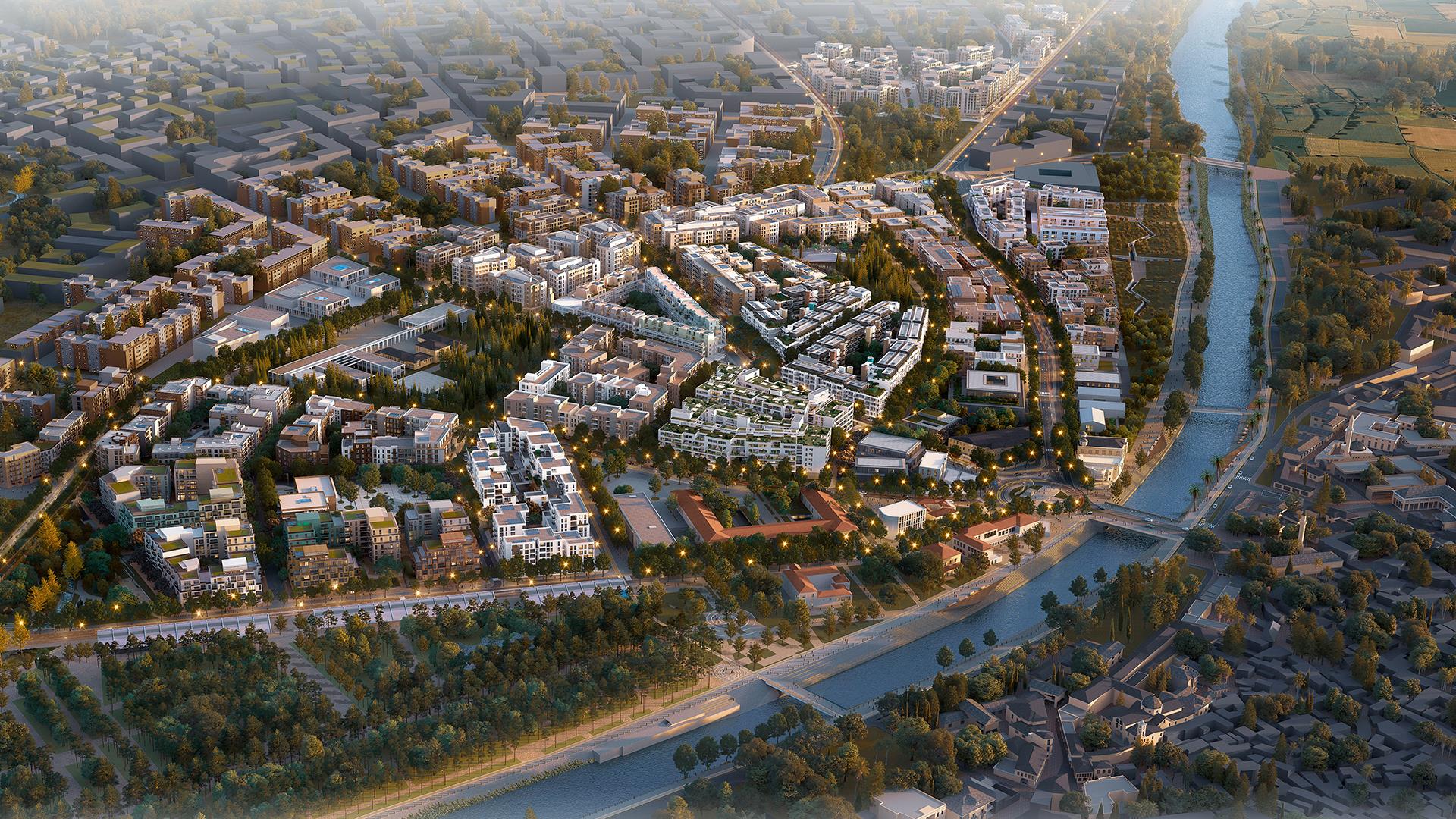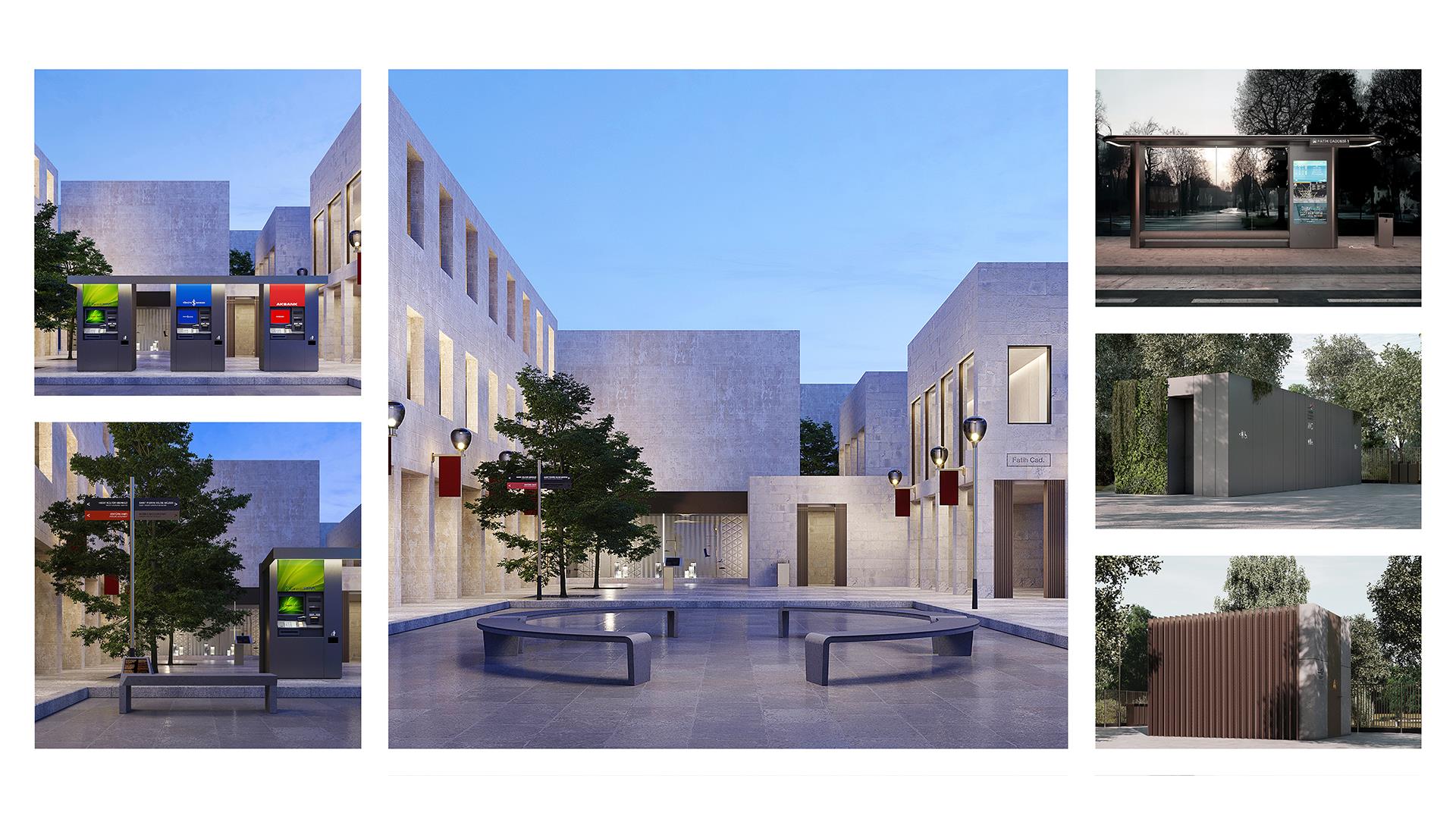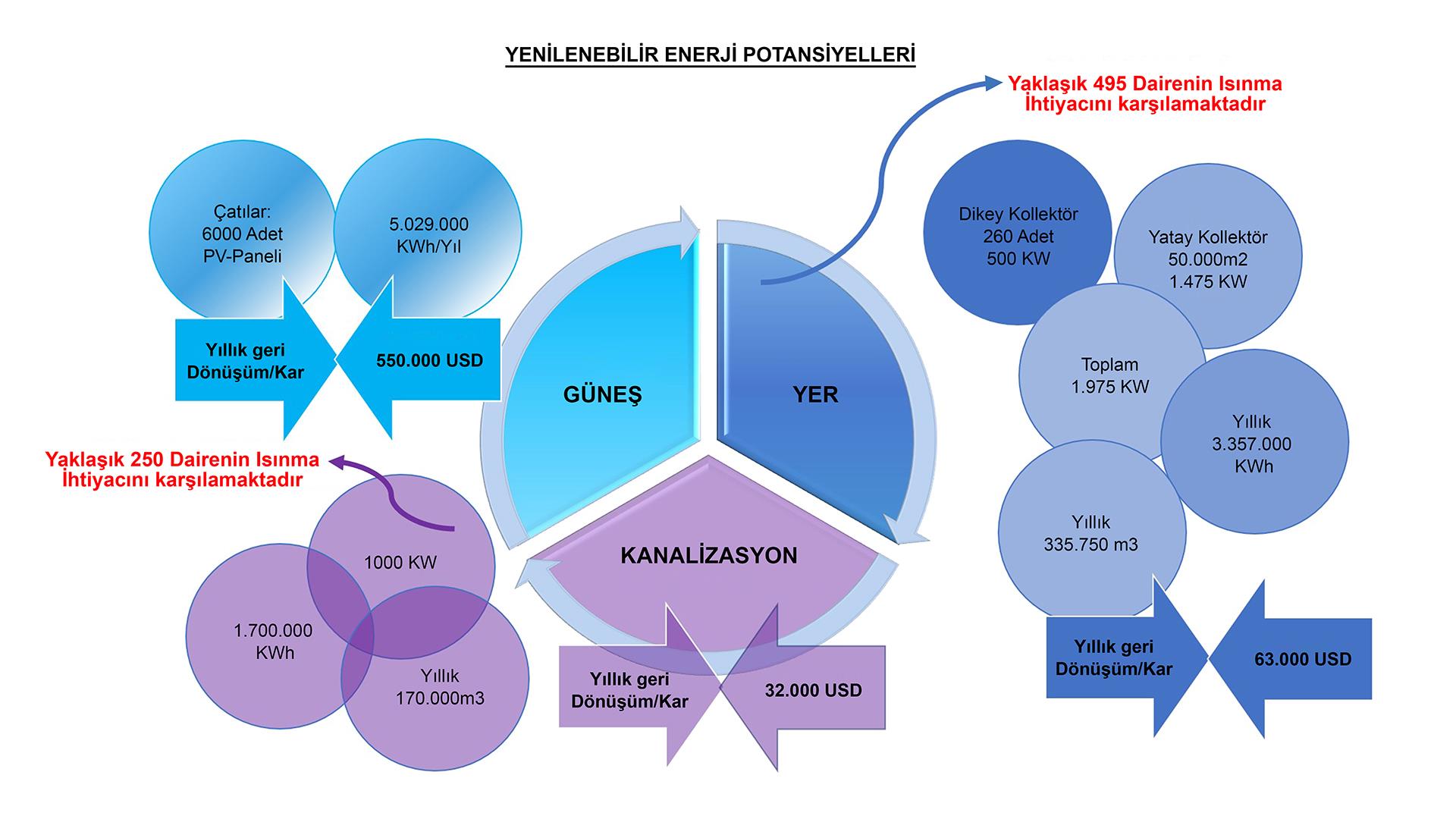ANTAKYA MOBILITY AND TRANSPORTATION STRATEGIES
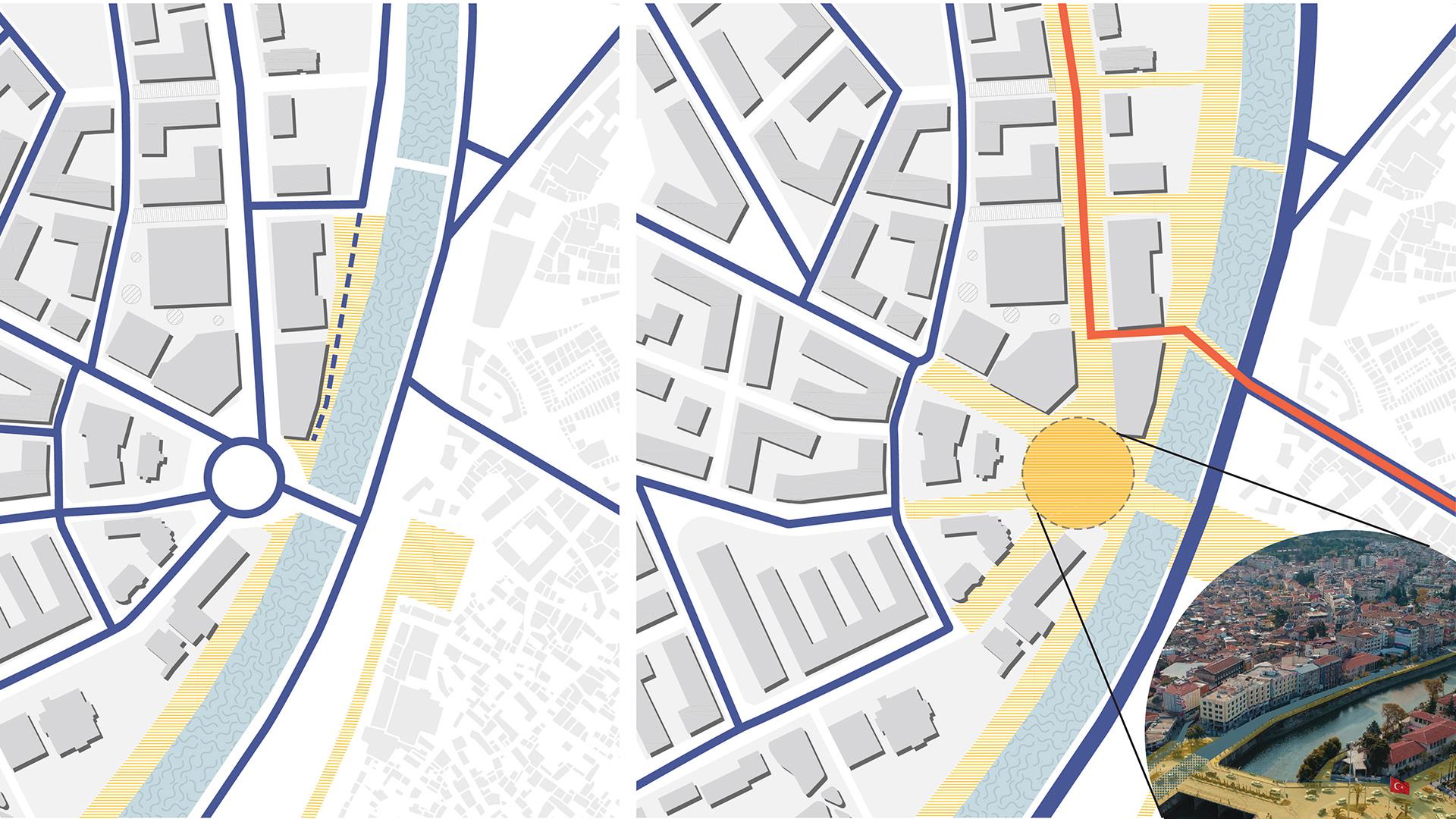
The road network of the pilot project area before the earthquake featured a strong radial structure with all main avenues converging into Cumhuriyet Meydanı. As a result, Cumhuriyet Square acted as pivot point for many trips within the city centre, but also for wider distance journeys across to the other side of the river.
Within the pilot project area, the road network was already orga ised according to a number of major one-way streets. The proposed circulation scheme aims to strength this system. Such loops in and out of the city centre will in fact limit through-traffic and substantially contribute to the creation of a much more pedestrian friendly environment.
In the future, the area in and around Cumhuriyet Square will be pedestrianised, with Ata Köprüsü kept for pedestrian circulation. The area around Cumhuriyet Square will become a fully pedestrian environment with many civic amenities. It will act as a ‘leaving room for the city’ with corridors connecting to the old and the new part of the city. The construction of an additional bridge for public transport and pedestrians North of Ata Bridge is also envisioned as part of the intervention.
The mobility strategy prepared by MIC-HUB addressed many aspects related to transport planning and aims to bring together a number of key principles currently been applied across many cities including Barcellona, Paris, Milan, London and Moscow among others.
One important component of the mobility framework proposed is the creation of superblocks. One of the key principles underpinning S perblocks is that the bulk of the road space (approx. 94%) is dedicated to pedestrian, bicycle and local neighbourhoods / leisure uses. Vehicles are allowed in, primarily for accessing residences, public transport, disabled people, emergency vehicles, but must reduce their speed to 10 km/h and are treated as ‘guest’.
Another key tenet of the mobility strategy has to do with the fact that although car ownership is expected to grow in the future, the use of cars for short journeys and within the denser parts of the urban e vironment should be contained in favour of more sustainable modes of transport.
Following the seismic event that tragically raptured the texture of everyday life in Antakya and across the wider region, the possibility now presents itself to plan for a more resilient urban mobility system. One that seeks to maximise accessibility and quality of life (including social equity, health and environmental quality and economic viability), rather than one solely focused on traffic flow capacity and speed.


